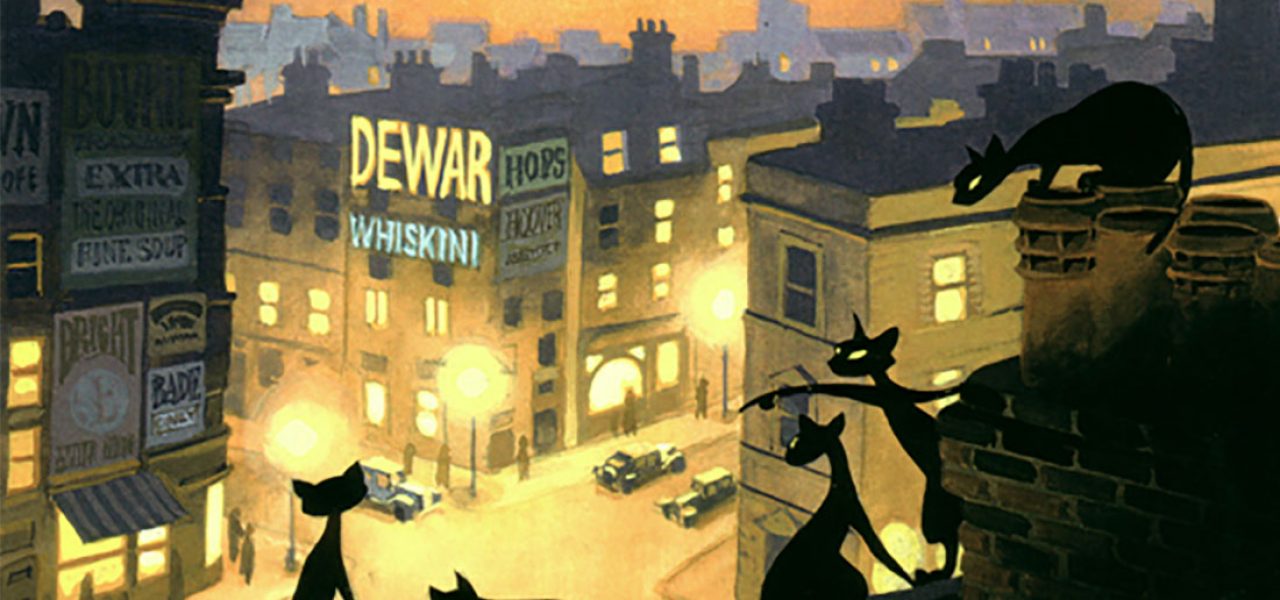
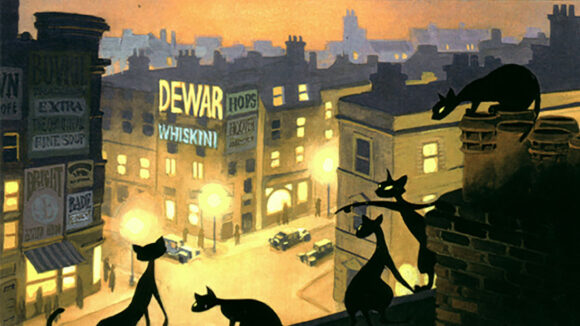
Why Steven Spielberg’s Animated Adaptation Of ‘Cats’ Never Made It Past Development
In the flurry of excitement over Taylor Swift, shrunken actors, and the meaning of “digital fur technology,” it’s easy to forget that this isn’t the first stab at bringing Andrew Lloyd Webber’s hit musical Cats to cinemas. Steven Spielberg — who’s executive-producing Cats through his company Amblin Entertainment — originally conceived of the film 30 years ago, in an entirely different hybrid style.
In 1990, Spielberg was the most bankable person working in film. Lloyd Webber was his equivalent in theater: since its opening in London’s West End in 1981, Cats had notched up thousands of performances across 15 countries. The two men were reportedly pals; a collaboration made good Hollywood sense. And so it was announced that Spielberg’s fledgling Amblimation, the now-defunct animation arm of Amblin, would produce a feature film based on the musical.
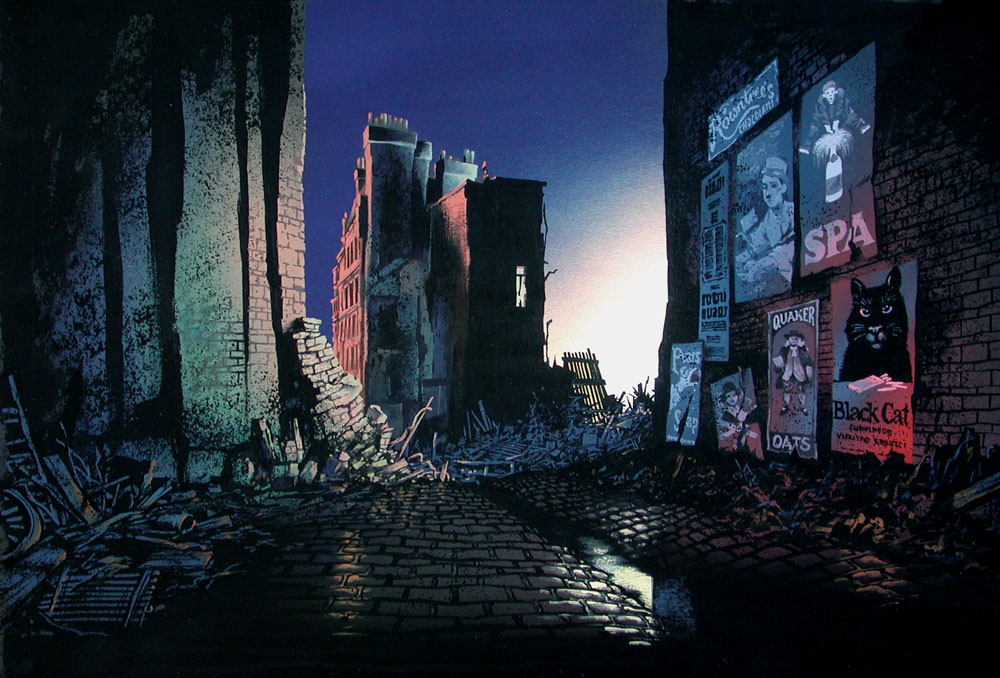
“It’s literally a match made in heaven,” Tom Pollock, president of Universal Pictures (which was set to finance the film), told The Los Angeles Times at the time. “Both Steven and Andrew obviously have a strong sense of just what it is that the public wants to see.”
An animated Cats had been a long time coming. The musical was based on a collection of light poems that T.S. Eliot had written for his godchildren. According to Webber, Walt Disney had approached Eliot to discuss an adaptation in the late 1940s, only to be rebuffed: Eliot feared that the poems “would become too pretty.” By the time Webber came to write the musical, the poet was dead and his widow was happy to hand over the rights. The show’s runaway success paved the way for Spielberg’s version.
Spielberg had recently co-produced Who Framed Roger Rabbit, an animation-live action hybrid feature whose animation had been done in London. The film’s triumph emboldened him to launch Amblimation, a 2d animation studio that would rival Disney (which was then on the cusp of its 1990s renaissance). Setting up shop in London, Amblimation hired hundreds of staff — many of whom had worked on Roger Rabbit — and made the ambitious 2d feature An American Tail: Fievel Goes West. The film opened in 1991 to middling reviews and lackluster box office takings.
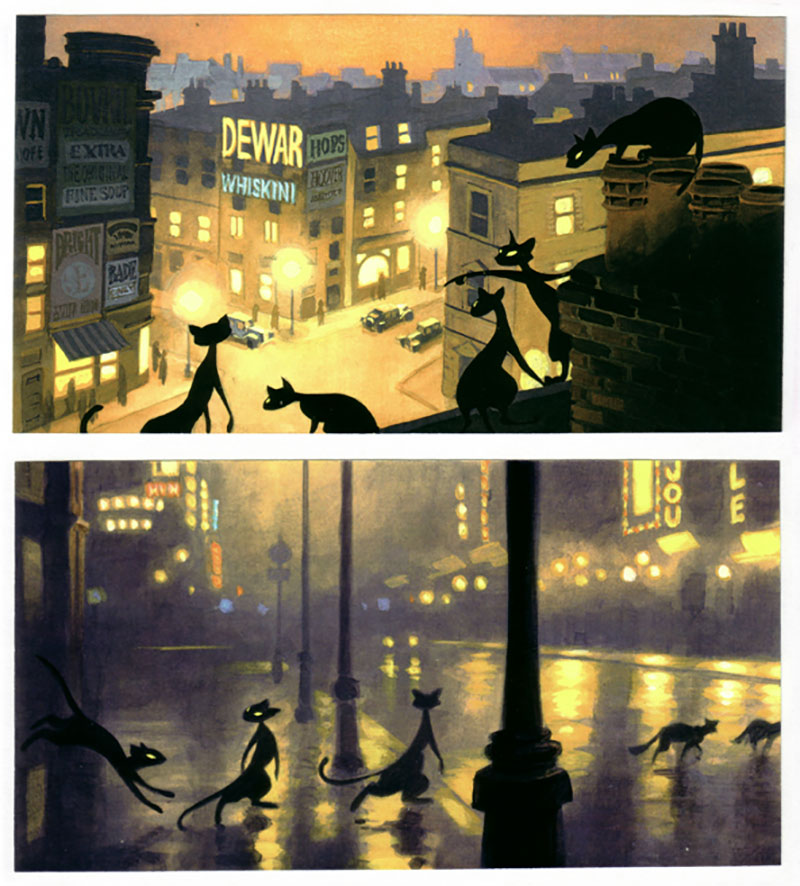
Cats was next in line. “I was at Amblimation in London when development first began, finishing up Fievel Goes West,” animator and story artist Scott Santoro told Cartoon Brew. “The heads of departments were treated to seeing the play at the New London Theatre in the West End one night as a sort of kick-off.” Simon Wells and Phil Nibbelink, who had directed Fievel Goes West, were once again at the helm; other Roger Rabbit veterans, including Hans Bacher and Shelley Page, were brought on to develop the film’s look.
This small team had big ambitions. “[The idea] was to mix scale models for the sets with traditional animation for the characters,” Luc Desmarchelier, who would later join the production as art director, explained to Cartoon Brew. “The art, inspired by German Expressionism, was very dark and dramatic.”
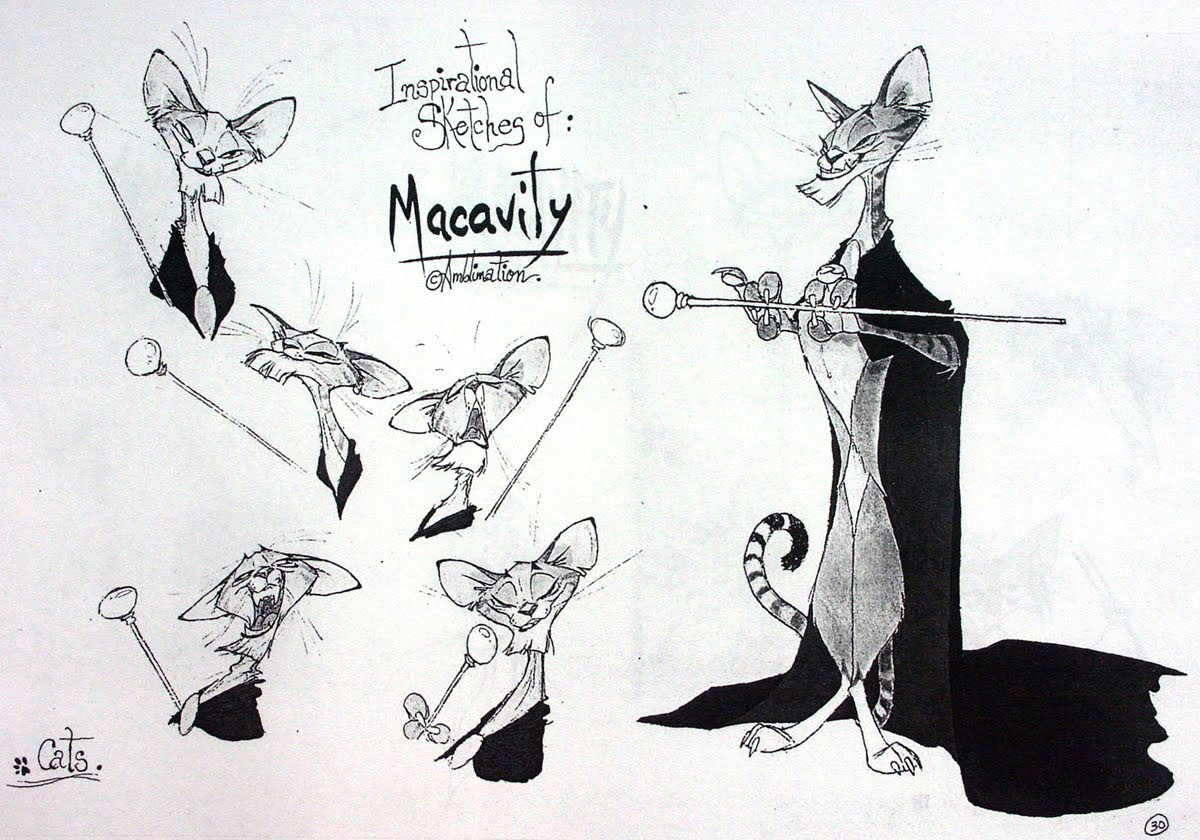
In a departure from the stage musical, Spielberg decided to set the film in London during the Blitz — the phase of sustained German air raids during the World War II. This called for “a destroyed environment,” in the words of Hans Bacher. He recalls roaming “the ugliest areas in London” with the musical’s stage designer John Napier, taking hundreds of reference photos for his backgrounds. Drawing inspiration from Expressionist woodcuts, Bacher painted his designs with white correction fluid on black cardboard. The world began to take shape in the form of 3d sets, constructed under Page’s supervision.
As the visual development proceeded apace, the film hit an obstacle that was built into the very structure of Cats. Following the spirit of Eliot’s poems, the stage musical unfolds as a series of character vignettes, rather than a conventional plot. This didn’t sit well with the film’s producers, who sought to rewrite the script. “Unfortunately, things did not go too well with the story,” wrote Bacher. “The project was stopped after six months’ work.” The studio shifted its attention to another production, the 2d feature Balto.
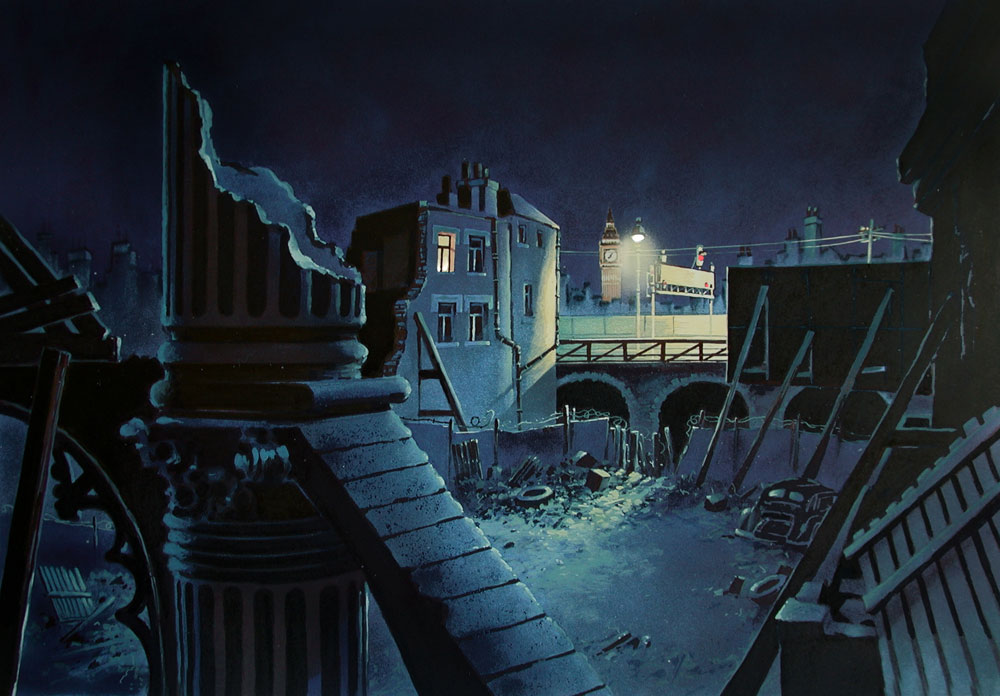
Yet Cats the stage show was raking in billions, and the film’s producers weren’t about to give up on their property. As Amblimation struggled to make its mark, Spielberg relocated the studio to L.A., where the musical was rebooted under a new team. Two more Amblimation stalwarts, Steve Hickner and Dick Zondag, were hired as directors, and celebrated British playwright Tom Stoppard was commissioned to write the screenplay. The press reported this as an entirely new production, due for release in 1997. Certainly, Desmarchelier’s vibrant gouache concept art from the period (some of which he’s posted on his blog) marks a break with Bacher’s earlier, more somber tone.
Santoro rejoined the team at this stage. He eventually realized that, even under its new guise, the project still faced the same scripting issues. “I was part of the very small story crew there, along with Paul Fisher, Jenny Lerew, and David Bowers,” he says. “Little did we know we wouldn’t get very far… We could all see the fundamental problems of trying to somehow make a story out of a property with wall-to-wall songs that weren’t built into any kind of narrative.”
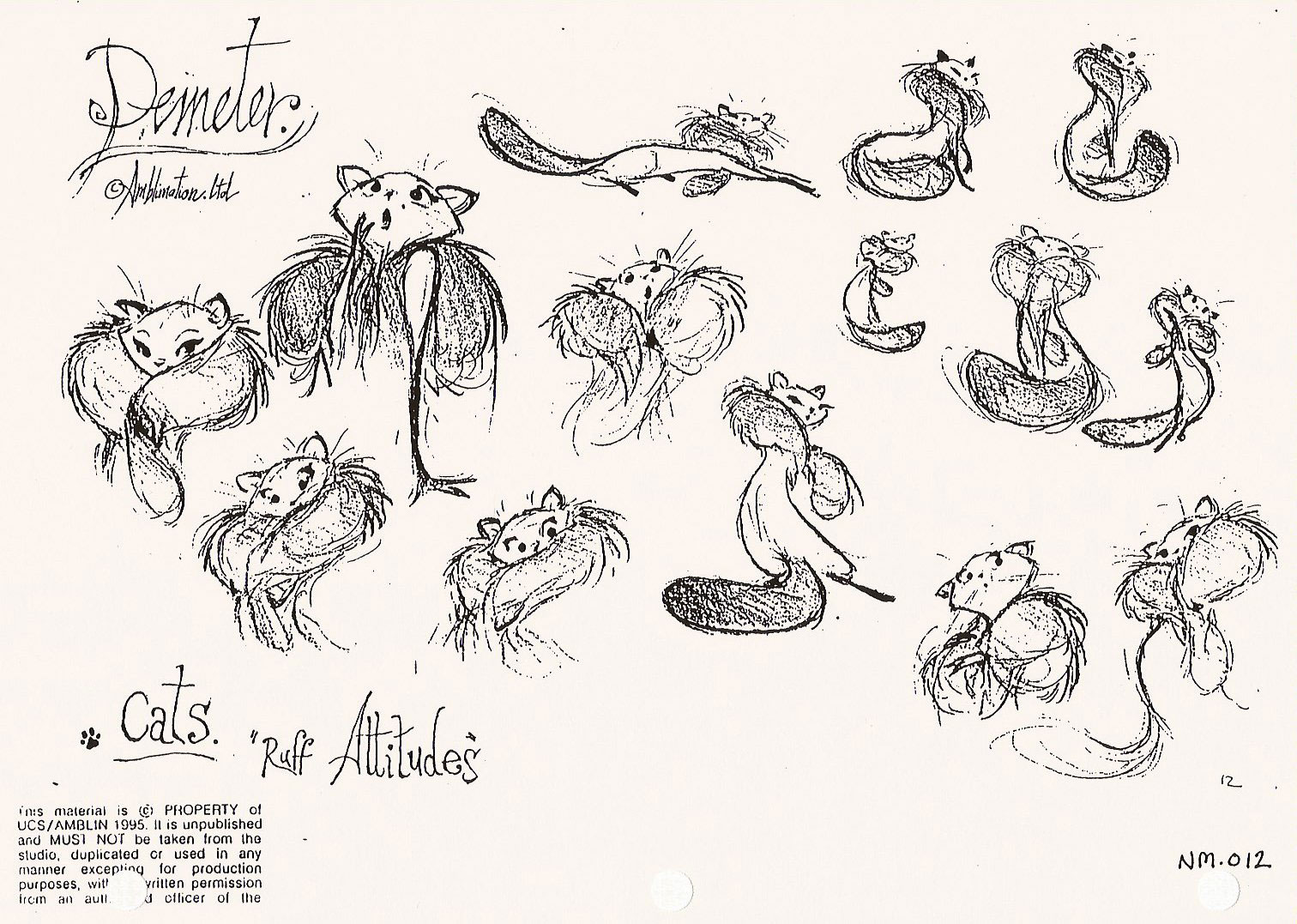
Desmarchelier agrees. By his account, the problems came down to a disagreement between Lloyd Webber and the film’s producers. “The desire to translate the episodic nature of [Eliot’s poems] and the stage play into a classic feature film ‘three-act’ structure made the adaptation difficult,” he says. “The script by Tom Stoppard struggled to reconcile the need for dramatic storytelling with the insistence by Lloyd Webber to preserve at all costs the procession of the musical numbers.”
Evidently, Spielberg and Lloyd Webber did both have “a strong sense of just what it is that the public wants to see.” They just couldn’t agree on what it was.
Balto hit theaters in late 1995. It was promptly destroyed at the box office by the one-two punch of competing family films Toy Story and Jumanji, becoming Amblimation’s third straight flop. The writing was on the wall. Spielberg was losing interest: he had co-founded Dreamworks Pictures, another pretender to Disney’s throne, the previous year, and was now focused on building its talent base. Just as Santoro was getting to work on Cats, he recalled that, “DreamWorks was hiring for The Prince of Egypt, and of course we were talking about this all the time.”
This new venture was the final straw. Santoro and Desmarchelier joined the exodus of staff to DreamWorks, and production on the musical was effectively shut down, although Santoro says that the directors continued to develop it for a while. Amblimation folded in 1997, a rare failure from one of Hollywood’s top money-spinners. Cats died with it.
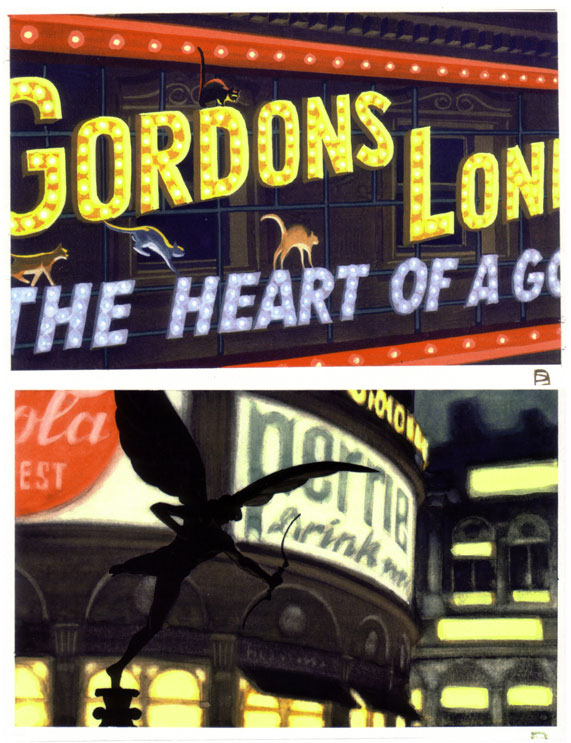
But its nine lives were far from used up. After Amblimation’s demise, the rights to the adaptation were bought by Universal, with which Spielberg had a longstanding relationship. In 2013, Lloyd Webber hinted that the company was thinking of reviving the project. As the new incarnation of Cats took shape, the composer confirmed that he had written a new song for it. The screenplay was penned by Lee Hall and Tom Hooper, the latter of whom also directed.
When the trailer was finally released, commentary focused on the outlandish visuals. Few asked about the narrative, which the trailer broadly keeps under wraps. Three decades after their first attempt, Spielberg, Lloyd Webber, and their associates appear to have found a compromise. Throughout the film’s long and tortured gestation, they may have taken heart from some of the musical’s most famous lyrics: “I must think of a new life / And I mustn’t give in.”

.png)